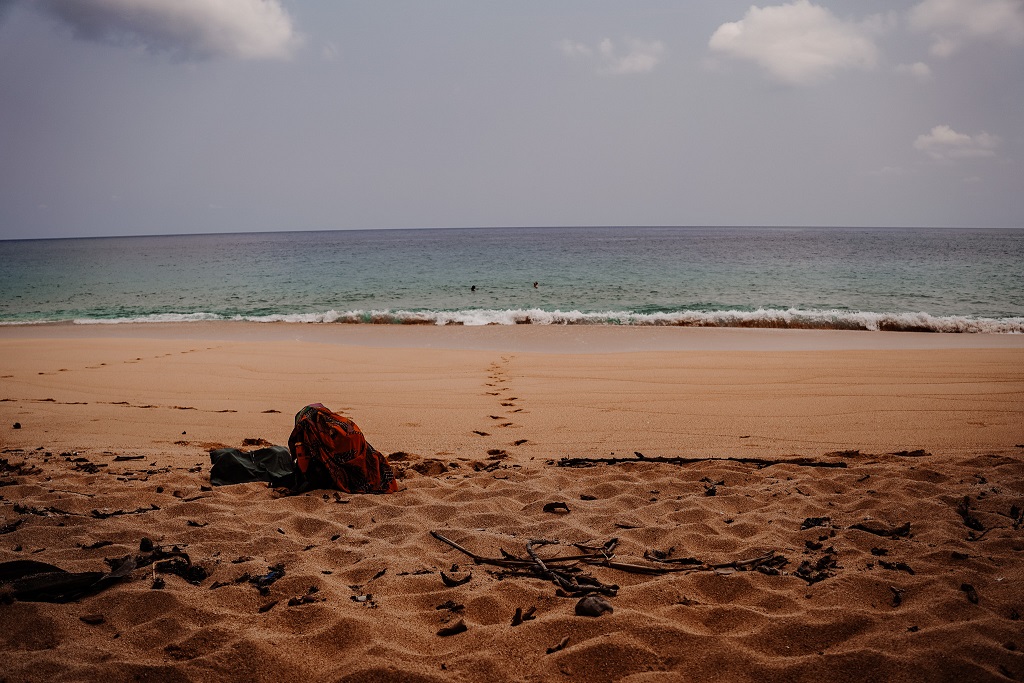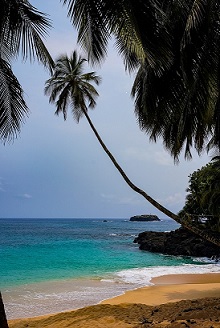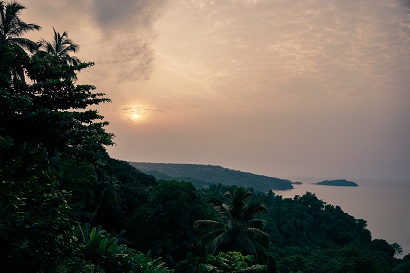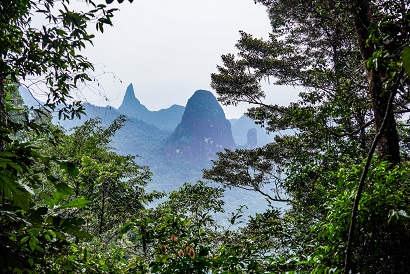
I don’t know about you, but ever since I discovered the joy of feeling the sun’s warmth on my skin during the cold, wet, and grey winter months, I’ve become a firm believer in topping up my depleted Vitamin D reserves abroad.
This year’s trip was a significant departure from my usual winter escapes. While my professional network packed their sunblock and skis for the slopes of the French and Italian Alps—a place where I’ve had many climbing adventures—I was stuffing my single pair of shorts and a bottle of jungle formula into my bag, preparing for a long-haul journey to a pair of islands in the Atlantic Ocean that few have ever heard of: São Tomé & Príncipe.
You may wonder what could possibly possess someone to travel to a place I hadn’t even heard of a year ago—nearly 4,000 miles away, with a population of just 237,000, only two flights a week, and barely any tourists. While my wife-to-be is extraordinarily persuasive, the truth is that, as a land surveyor and outdoor enthusiast, I’ve always wanted to stand on the equator and see which way a compass pointed. A simple reason, I know, but curiosity is a defining trait of mine, and once an idea takes root, I have to see it through.
Arriving in São Tomé, I was instantly hit with a blast of 30°C heat and 82% humidity—so much so that my camera lens fogged up the moment I pulled it from my bag. Having left behind the sub-zero temperatures of Manchester, the contrast was striking. Our smiling guide, who would be with us for the next 11 days, greeted us warmly and led us to our first night’s accommodation. As we walked freely down the middle of the capital’s main road, the lack of traffic and the introduction to the local cuisine (a far cry from tartiflette and schnapps) made it clear that this trip was going to be different.
 Heading south on roads that redefined my understanding of ‘rough terrain’ (I’ll never complain about potholes again), we arrived at the base of Pico Cão Grande. This dramatic volcanic spire dominates the skyline, jutting out from the jungle canopy like a giant finger pointing toward the sun. The whole landscape felt like something out of a lost world, and I half-expected Kong to stride through the ochre trees at any moment.
Heading south on roads that redefined my understanding of ‘rough terrain’ (I’ll never complain about potholes again), we arrived at the base of Pico Cão Grande. This dramatic volcanic spire dominates the skyline, jutting out from the jungle canopy like a giant finger pointing toward the sun. The whole landscape felt like something out of a lost world, and I half-expected Kong to stride through the ochre trees at any moment.
Trekking through the jungle along the coastline, we watched monkeys leap through the trees, startling parrots and kites as we sweated our way along the narrow path. The effort was more than worth it when we finally emerged onto a pristine golden beach, completely untouched by human presence. With crystal-clear waters at a balmy 27°C, we wasted no time diving in.
We stayed at Inhame Beach, an important turtle sanctuary, where we witnessed firsthand the incredible conservation efforts aimed at protecting these vulnerable creatures. Under the brilliance of the Milky Way, we watched baby turtles hatch and make their brave journey to the sea. The contrast between night and day, however, was stark. At dawn, we saw another group emerge—only this time, the predatory kites were waiting. I’ll spare you the details, but let’s just say nature can be as brutal as it is beautiful. You don’t often see that side of things on nature documentaries.
As we made our way back to the airport to fly to Príncipe, we passed cocoa and coffee plantations, a lasting reminder of the islands’ colonial past. Once the world’s largest producer of cocoa, São Tomé thrived under Portuguese rule, but at a heavy cost. The wealth of its natural resources was extracted through the labour of enslaved people, with little benefit to the island’s inhabitants. The colonial period eventually saw the construction of hospitals and schools, but today, many are in a state of disrepair—a reality reflected in the island’s average life expectancy of just 67, nearly 20 years behind much of the Western world.
And yet, the people of São Tomé and Príncipe exude a warmth and resilience that is truly inspiring. Their philosophy of “leve leve” (slowly, slowly) is reflected in their easy-going smiles and laughter as they pick fruit, salt fish, and prepare coconuts.
As far as travel experiences go, this trip was something truly special. My compass may have pointed north when I stood on the equator—a slight disappointment, as I secretly hoped it would spin unpredictably—but understanding the Earth’s magnetic field gave me the scientific explanation I needed. More importantly, though, the journey opened my eyes to a way of life so different from my own, a world untouched by mass tourism, and a people who, despite challenges, embrace life with open arms.
If you have an adventurous spirit, I can wholeheartedly recommend swapping the ski slopes or the crowded beaches of the Canaries for a piece of paradise in the Atlantic.
Nick Bamber is Managing Director of GMCC Members NTB Survey who provide accurate, affordable and reliable survey solutions across the UK.



